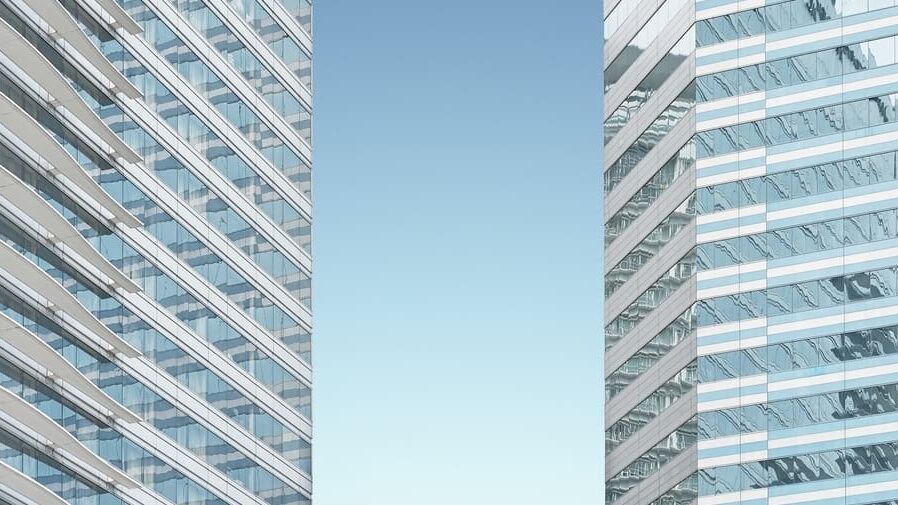Why Steel Framed Buildings Outperform Wooden Frame Buildings

Why Steel Framed Buildings Outperform Wooden Frame Buildings
Why Steel Framed Buildings Outperform Wooden Frame Buildings
Since humankind began to build homes and other structures, we have used a lot of different materials in our history. From mud and straw to sandstone blocks and brick, we’ve been looking for ways to make secure, safe structures for thousands of years.
These days however, we tend to build our homes with one of two frame types: wood, and steel. There are benefits to both, but there’s no denying that steel is superior in a number of ways, including durability and security – which is why commercial buildings such as skyscrapers rely so heavily on steel. And whilst there is merit in wooden frame buildings, there’s simply no substitute for steel.
Steel Has Better Strength And Durability
Steel-framed buildings offer unrivalled strength and durability compared to wooden frame buildings. Steel is a highly robust material that can withstand extreme weather conditions, seismic activity, and even fire. It provides long-term structural integrity, minimising the risk of warping, rotting, or sagging that can occur with wood over time.

Unlike wood, steel is also not able to bend or wrap over time, maintaining its integrity and shape to ensure long-term stability and reliability. This makes steel framed buildings particularly suitable for projects that require long-lasting structures, such as high-rise buildings, warehouses, industrial facilities, and bridges. These buildings can stand the test of time, maintaining their structural integrity and providing a safe and secure environment for occupants.
Steel Frames Buildings Possess Enhanced Safety And Security
Steel framed buildings provide superior safety and security features that wood simply cannot compete with. One of the most important aspects of steel is that it is non-combustible, reducing the risk of fire spread and enhancing fire safety. This makes it one of the safest construction materials around and is important in high-risk environments such as commercial buildings, warehouses, or public spaces where large numbers of people may gather and allowing people more time to evacuate safely in the case of fire.
On top of this, in areas prone to hurricanes, tornadoes, or high winds, steel framed buildings offer greater resistance against the forces of nature.
Better Design Flexibility With Steel
Steel-framed buildings offer greater design flexibility and clear spans, meaning that the strength of the steel eliminates the need for vertical support columns. This provides far more freedom in architectural design and space utilisation so that architects and designers can have freedom to express their ideas. This flexibility is especially beneficial in commercial and industrial settings where large open areas are often required.

With steel, architects can also explore unique and imaginative forms that would be challenging to achieve with wood. The malleability of steel allows for curved or angled designs, creating visually stunning and iconic buildings that stand out in the urban landscape. These components can be built off-site and brought in later, minimising disruptions to construction.
Sustainability And Environmental Benefits
It may be surprising to hear, but steel-framed buildings are a highly environmentally-friendly choice – this is because steel is 100% recyclable, and using recycled steel in construction significantly reduces the demand for raw materials. And, even during the recycling process, steel retains all of its structural qualities, making it an invaluable resource for the construction industry.
Additionally, steel-framed buildings have a longer lifespan compared to wood, reducing the need for replacement and minimising construction waste. Lastly, the steel industry has been taking significant strides to reduce its environmental footprint: modern steel manufacturing processes use advanced technologies to minimise energy consumption, greenhouse gas emissions, and water usage, making steel an even more environmentally conscious choice.

Cost-Effectiveness And Maintenance Efficiency
While the initial cost of steel-framed buildings may be higher than wooden frame buildings, they offer long-term cost-effectiveness. Steel structures also require minimal maintenance, saving on repair and replacement costs associated with wood.
Steel framed buildings also have a longer lifespan compared to wooden frame buildings. As we’ve previously mentioned, steel is a highly durable material that can withstand various environmental conditions and natural disasters. It won’t degrade over time like wood, ensuring the structural integrity of the building remains intact for decades. The extended lifespan of steel-framed buildings eliminates the need for wasteful replacements, reducing costs associated with reconstruction or renovation.
As you can see, when it comes to steel vs wooden frame buildings, steel comes out on top every time. At Australian Steel Traders, we can provide you the steel needed for your construction projects. Get in touch today and let us know what you need.
